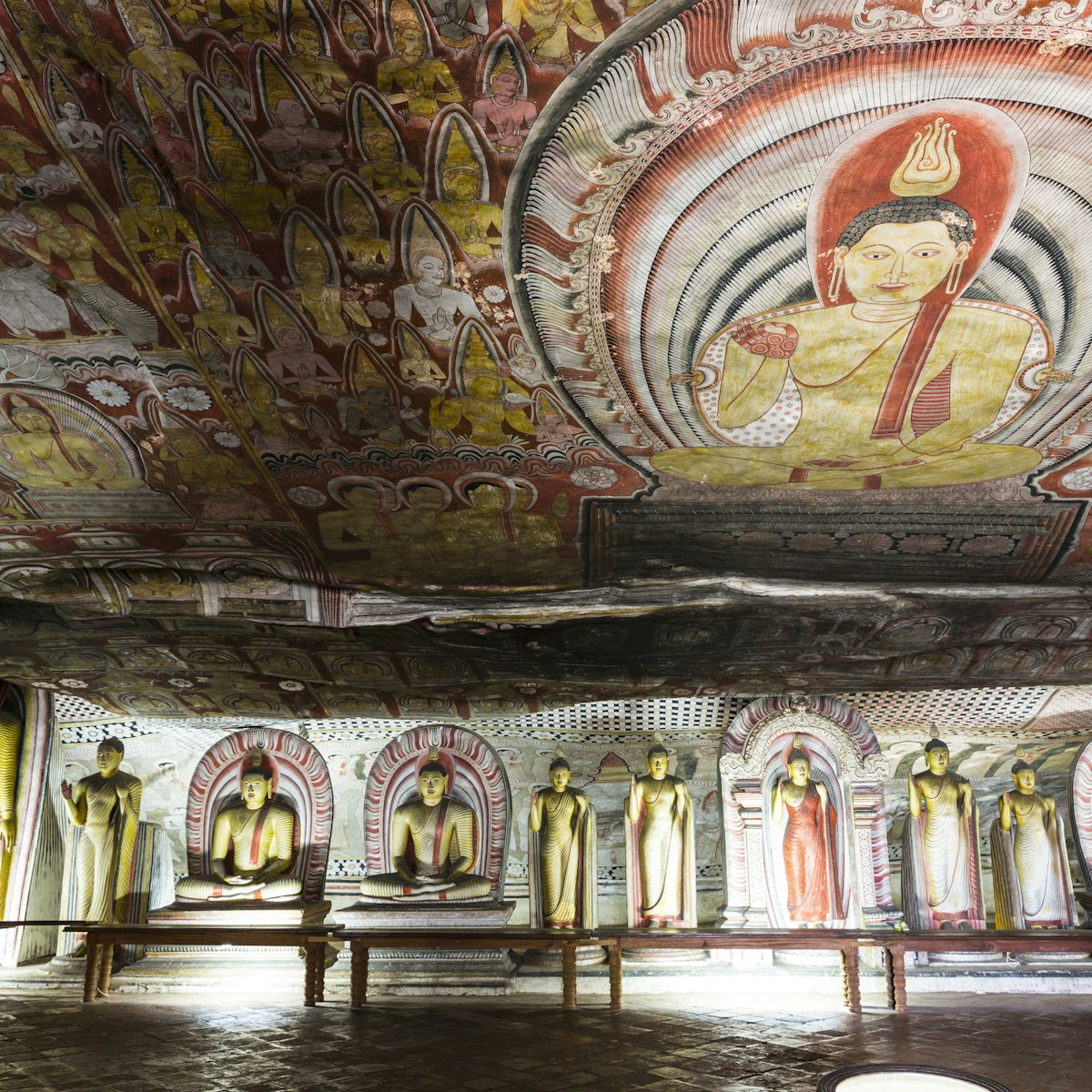Part of Parakramabahu I’s northern monastery, Gal Vihara is a group of beautiful Buddha images that probably marks the high point of Sinhalese rock carving. The giant reclining Buddha statue will be familiar to many travellers, having graced the cover of numerous travel guides to the country (and even more Instagram feeds!), but the complex is actually home to four separate Buddha images, all cut from one long slab of granite. At one time, each was enshrined within a separate enclosure.
The standing Buddha is 7m tall and is said to be the finest of the series. The unusual crossed position of the arms and sorrowful facial expression led to the theory that it was an image of the Buddha’s disciple Ananda, grieving for his master’s departure for nirvana, since the reclining image is next to it. The fact that it had its own separate enclosure, along with the discovery of other images with the same arm position, has discredited this theory and it is now accepted that all the images are of the Buddha.
The reclining Buddha depicted entering parinirvana (nirvana-after-death) is 14m long. The detail here is amazing, notably the subtle depression in the pillow under the head, and the lotus symbols both on the pillow end and on the soles of Buddha's feet.
The seated Buddha on the far left has four further Buddhas depicted in the torana (ornamental gateway) above, making this a probable depiction of the Five Dhyani Buddhas. The carvings make superb use of the natural marbling in the rock.
The fourth Buddha in the small rock cavity is smaller and of inferior quality.






